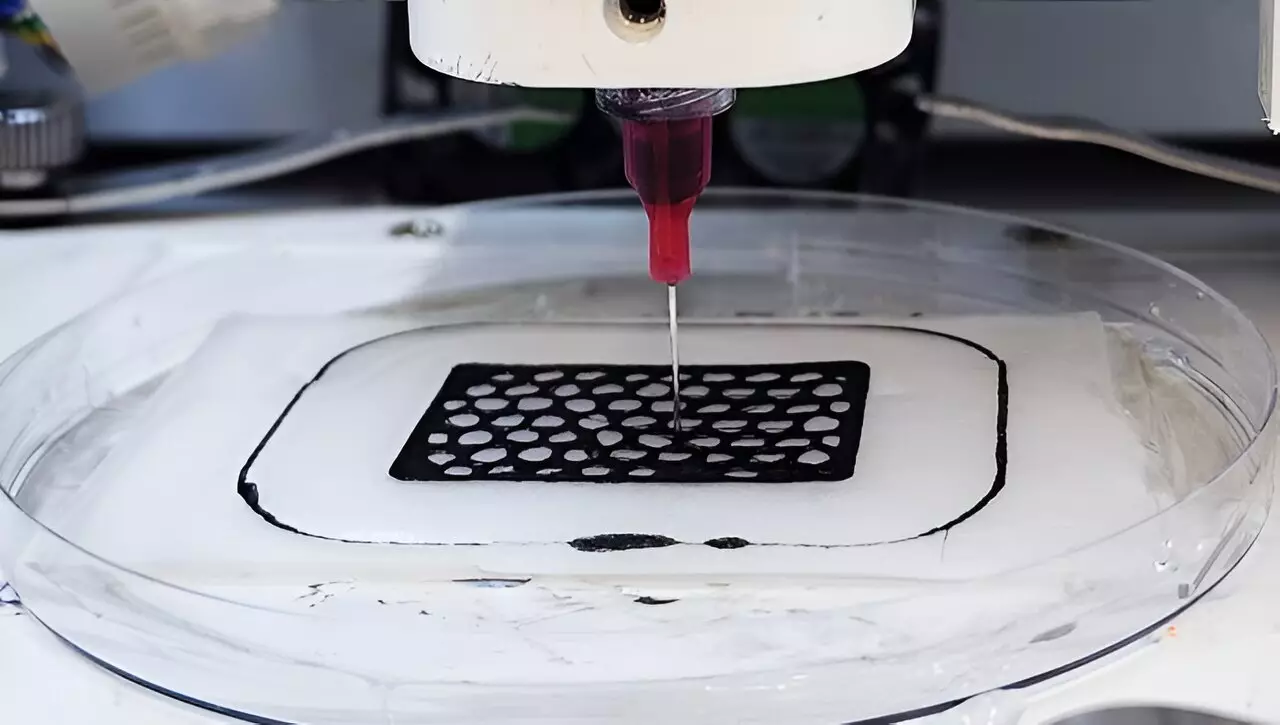Engineers at the University of California San Diego have unveiled a groundbreaking 3D printing method that promises to render materials manufacturing significantly more sustainable. The new technique leverages a polymer ink combined with a calcium chloride saltwater solution to produce solid structures efficiently and with an environmentally conscious approach. The research, highlighted in Nature Communications, offers insights into a promising future for manufacturing practices that minimize ecological footprints.
The foundation of this innovative method is a liquid polymer solution—specifically, poly(N-isopropylacrylamide), commonly referred to as PNIPAM. When extruded through a specially designed needle into a calcium chloride solution, this polymer ink experiences immediate solidification upon contact with the saltwater. This rapid transformation occurs because of the salting-out effect, a process wherein salt ions attract water molecules away from the polymer solution. This phenomenon leads to the denser aggregation of the hydrophobic chains in the PNIPAM, forming a stable solid structure.
What sets this technique apart from traditional polymer manufacturing methods is its operation under ambient conditions, entirely eliminating the requirements for extra steps, specialized apparatus, or harmful substances. According to Jinhye Bae, a key researcher in this study, the process is devoid of heating or high-pressure applications, making it not only efficient but also significantly less harmful to the environment compared to conventional polymer solidification methods. Traditional techniques typically involve energy-intensive measures that contribute to greater environmental degradation.
One of the most innovative aspects of this method is its reversibility. Structures produced through this 3D printing technique can be dissolved back into their liquid form simply by immersing them in fresh water. This ability to recycle allows for repeated use of the PNIPAM ink, thus promoting a more sustainable lifecycle for polymer materials. Bae further emphasizes that this aspect paves the way for eco-friendly recycling approaches in the realm of polymer manufacturing.
The versatility of this new 3D printing method extends beyond simplicity and sustainability. Researchers have successfully demonstrated its application by combining PNIPAM with other materials, resulting in functional printed components such as an electrical circuit made with carbon nanotubes. In a remarkable demonstration, this circuit successfully powered a light bulb and could also be dissolved in water, hinting at future possibilities for water-soluble electronic components. This innovation raises exciting prospects for the development of sustainable technology in various industries.
As researchers continue to explore this groundbreaking technology, the implications for environmentally friendly polymer manufacturing are immense. Jinhye Bae and her team’s research signifies a pivotal advancement within the realm of 3D printing—one that prioritizes sustainability without sacrificing efficiency. With further development, this technique could soon be integral to the future of eco-conscious manufacturing practices, aligning industry demands with environmental responsibilities.


Leave a Reply